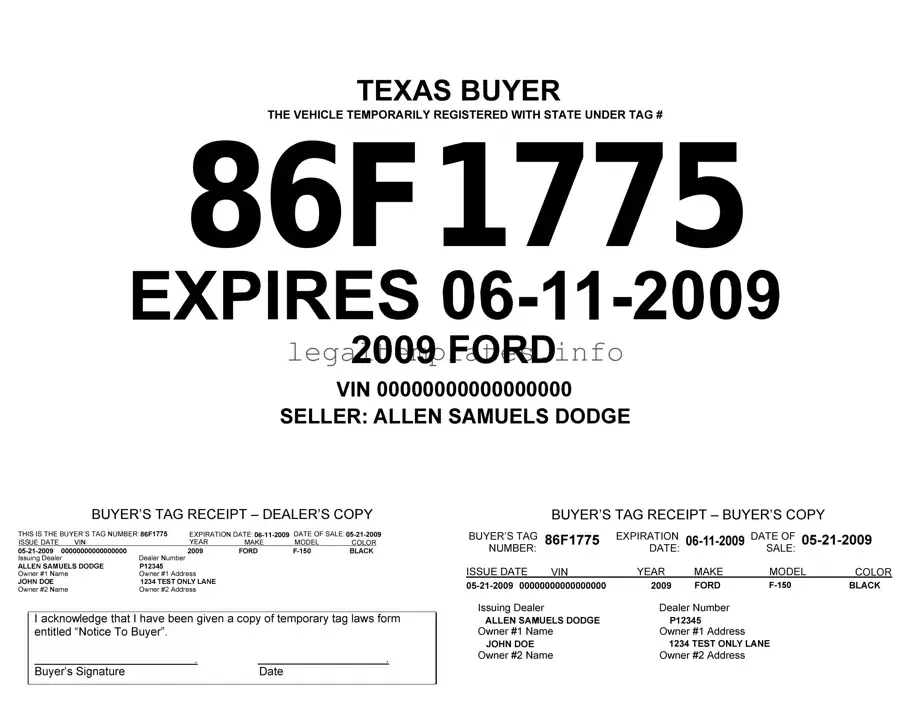The Texas Temporary Tag form bears similarities to a Vehicle Registration Application. Both documents are essential for legally recognizing one's right to operate a vehicle on public roads. A Vehicle Registration Application, much like the temporary tag form, collects vital information about the vehicle and its owner, ensuring that all necessary data is recorded for state and federal compliance. The process guarantees that vehicles are appropriately cataloged and meet regulatory standards before hitting the road.
Comparable to the Bill of Sale for a Motor Vehicle, the Texas Temporary Tag form also functions as a transitional document. It serves to bridge the gap between the purchase of a vehicle and its formal registration. The Bill of Sale confirms a legal transfer of ownership, detailing the transaction between buyer and seller, just as the temporary tag form records the initial steps toward official vehicle use authorization.
Similarly, the Texas Temporary Tag form shares features with an Insurance Verification Form. Both documents are required to confirm compliance with state laws—insurance verification assures that the vehicle meets state-mandated coverage, while the temporary tag form is a precursor to gaining full legal permission for vehicular travel. Their ultimate goal is to ensure that the vehicle and its operation adhere to legal requisites for safety and financial responsibility.
The Temporary Vehicle Import Permit, often used by individuals importing vehicles into a country temporarily, resembles the Texas Temporary Tag form in its temporary nature. While the permit facilitates temporary entry and use of a vehicle within a foreign country, the temporary tag allows for the provisional use of a vehicle until permanent registration is completed. Each document temporarily circumvents the usual lengthy processes associated with vehicle use in new jurisdictions.
Another document with similarities to the Texas Temporary Tag form is the Parking Permit Application. Both are instrumental for authorizing vehicle use in specific contexts—while the parking permit grants permission to park in designated areas, the temporary tag allows for the conditional operation of the vehicle on public roads. Each serves to legalize an aspect of vehicular operation within a regulated framework.
The Vehicle Inspection Report shares a crucial connection with the Texas Temporary Tag form, as it is a fundamental step in the process of ensuring a vehicle's roadworthiness. The inspection report details the condition and safety of a vehicle, a necessary step before a temporary tag can be issued. This ensures that only vehicles that meet safety standards are permitted on the road, even on a temporary basis.
Last, the Emissions Test Certificate, required in many jurisdictions to verify a vehicle's compliance with environmental standards, is akin to the Texas Temporary Tag form in its role as a gatekeeper for legal vehicle operation. Before a vehicle can be driven, even under a temporary tag, it must often demonstrate compliance with emissions standards. This certificate, therefore, complements the purpose of the temporary tag by ensuring the vehicle contributes to a healthier environment while it's on the road.

